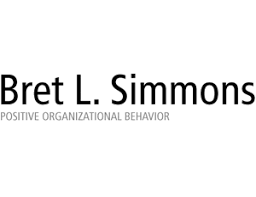Employees First, Customers Second: Bret L. Simmons Review

I want to work for Vineet Nayar!
I loved Nayar’s book “Employees First, Customers Second: Turning Conventional Management Upside Down.” It is one of the best management/leadership books I’ve read recently.
In this book, Nayar tells the story of how he transformed an already successful company, HCLT, into one of the fastest growing IT service partners in the world. The personal story Nayar shares is compelling, insightful, and at times funny and brutally honest. Have your highlighter handy when you read this because it is packed full of wisdom and quotable passages.
The transformation of HCLT is an excellent example of the logic of the service-profit chain. Nayar’s employees grew the company by impressing the socks off their customers. Nayar and his leadership team partnered with employees to create the systems that made everyone in the organization, including management, accountable to the value zone – the place where value is truly created for customers. Nayar was wise enough to acknowledge that the value zone is not in the executive suite.
One of the most interesting changes they made was in the performance evaluation system for managers. They opened it up so that “any employee could choose to do a 360-degree evaluation of any of the managers they believed had an influence – positive or negative – on their ability to do their job.” (p. 120). They also allowed anyone who had given feedback to a manager to see the results of that manager’s evaluation. By making radical changes to this important system, managers changed their behavior and focused more on their span of influence instead of their zone of control.
Nayar didn’t want satisfaction and engagement from employees, he wanted passion.
Is satisfaction really a useful indicator of anything? Satisfaction is very different from passion. Doesn’t satisfaction actually imply a complacent acceptance of how things already are? If I am satisfied, will I be interested in changing or improving anything? And what about engagement? Is that any better? I suppose that if an employee is engaged, that is better than being disengaged. But isn’t it just another, slightly more active form of satisfaction? (p. 152).
Think they got passion by simply exhorting their employees? Nope. They created systems to both identify the main drivers of passion in employees and to embed those passions into the organizational structure. Employees loved it.
The transformation of HCLT occurred because the systems they put in place successfully transferred the responsibility for change from the CEO to employees:
The CEO can no longer be the one who scribbles strategy on a paper napkin over dinner. He or she cannot be the one who stands in front of a crowd to motivate it with fabulous oratory. The CEO will not be the one who thinks of the best and brightest ideas. The role of the CEO is to enable people to excel, help them discover their own wisdom, engage themselves entirely in their work, and accept responsibility for making change. (pp, 163-164).
That’s brilliant. I loved this book, and I think you will too.


